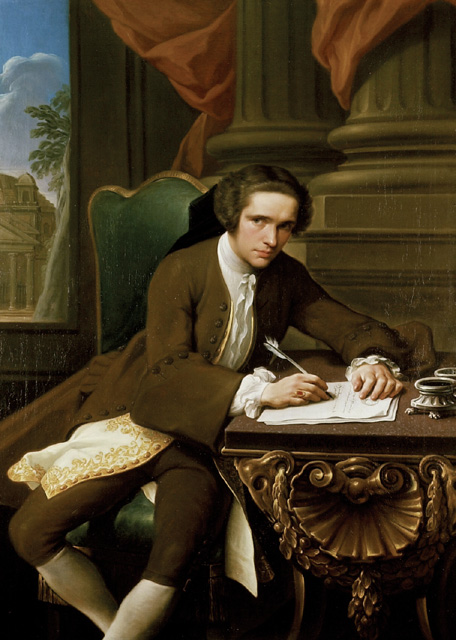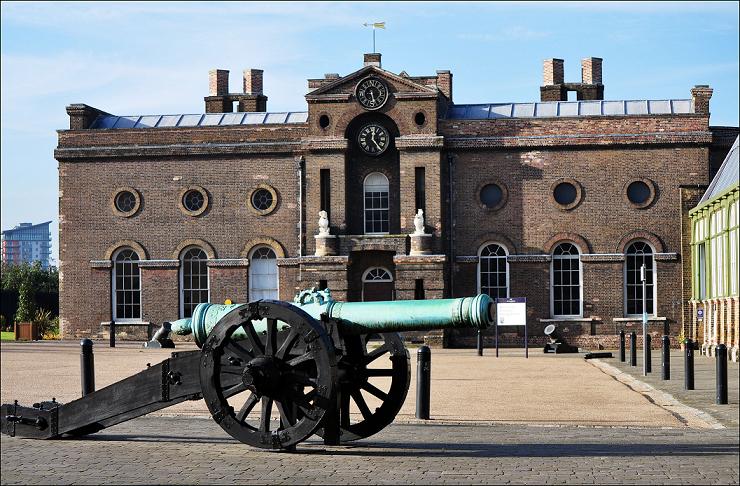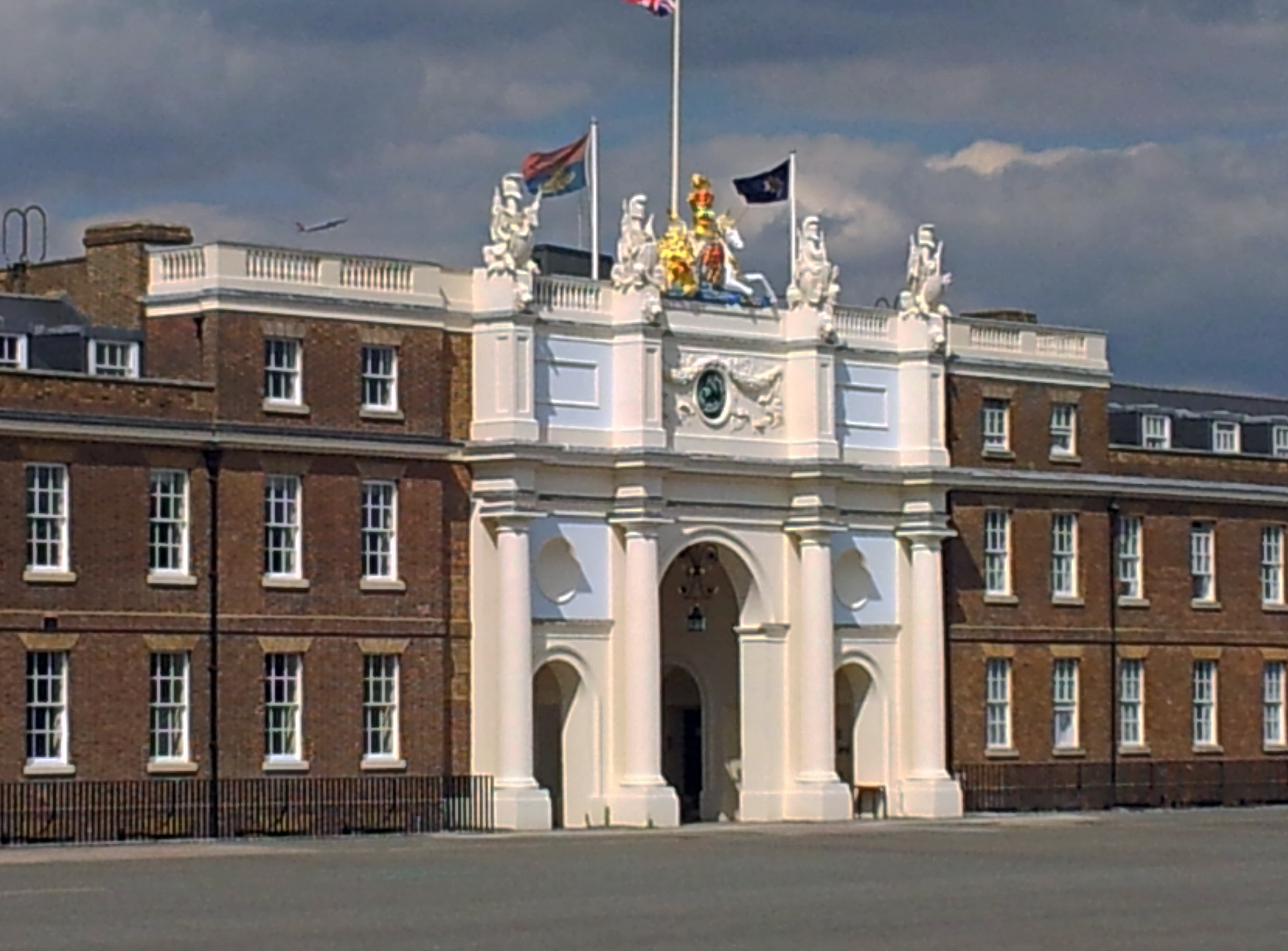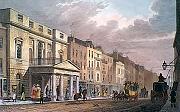|
Charles Frederick (MP)
Sir Charles Frederick KB FRS (21 December 1709 – 18 December 1785) was a British politician who sat in the House of Commons from 1741 to 1784. Early life Frederick was the third son of Sir Thomas Frederick, sometime Governor of Fort St David, and his wife Mary Moncrieff, daughter of William Moncrieff and was born on 21 December 1709. He was a younger brother of Sir John Frederick, 4th Baronet. He was educated at Westminster School from 1719 to 1720 and matriculated at New College, Oxford on 19 March 1725. In 1728 he entered Middle Temple. He was elected a Fellow of the Royal Society in May 1733. He undertook a Grand Tour through Italy, Constantinople, the near East and France with his brother John from 1737 to 1739. Political career Frederick was returned unopposed as Member of Parliament for New Shoreham in the 1741 general election and also in 1747. In the 1754 general election he was elected as MP for Queenborough in a contest. He was made a Knight Companion of the O ... [...More Info...] [...Related Items...] OR: [Wikipedia] [Google] [Baidu] |
Knight Of The Bath
The Most Honourable Order of the Bath is a British order of chivalry founded by George I on 18 May 1725. The name derives from the elaborate medieval ceremony for appointing a knight, which involved bathing (as a symbol of purification) as one of its elements. The knights so created were known as "Knights of the Bath". George I "erected the Knights of the Bath into a regular Military Order". He did not (as is commonly believed) revive the Order of the Bath, since it had never previously existed as an Order, in the sense of a body of knights who were governed by a set of statutes and whose numbers were replenished when vacancies occurred. The Order consists of the Sovereign (currently King Charles III), the Great Master (currently vacant) and three Classes of members: *Knight Grand Cross ( GCB) ''or'' Dame Grand Cross ( GCB) *Knight Commander ( KCB) ''or'' Dame Commander ( DCB) *Companion ( CB) Members belong to either the Civil or the Military Division.''Statutes'' 1925, arti ... [...More Info...] [...Related Items...] OR: [Wikipedia] [Google] [Baidu] |
Order Of The Bath
The Most Honourable Order of the Bath is a British order of chivalry founded by George I of Great Britain, George I on 18 May 1725. The name derives from the elaborate medieval ceremony for appointing a knight, which involved Bathing#Medieval and early-modern Europe, bathing (as a symbol of purification) as one of its elements. The knights so created were known as "Knights of the Bath". George I "erected the Knights of the Bath into a regular Order (honour), Military Order". He did not (as is commonly believed) revive the Order of the Bath, since it had never previously existed as an Order, in the sense of a body of knights who were governed by a set of Statute, statutes and whose numbers were replenished when vacancies occurred. The Order consists of the Sovereign (currently Charles III, King Charles III), the :Great Masters of the Order of the Bath, Great Master (currently vacant) and three Classes of members: *Knight Grand Cross (:Knights Grand Cross of the Order of the Bath ... [...More Info...] [...Related Items...] OR: [Wikipedia] [Google] [Baidu] |
Royal Military Academy, Woolwich
The Royal Military Academy (RMA) at Woolwich, in south-east London, was a British Army military academy for the training of commissioned officers of the Royal Artillery and Royal Engineers. It later also trained officers of the Royal Corps of Signals and other technical corps. RMA Woolwich was commonly known as "The Shop" because its first building was a converted workshop of the Woolwich Arsenal. History Origins in the Royal Arsenal An attempt had been made by the Board of Ordnance in 1720 to set up an academy within its Arsenal (then known as the Warren) to provide training and education for prospective officers of its new Regiment of Artillery and Corps of Engineers (both of which had been established there in 1716). A new building was being constructed in readiness for the Academy and funds had been secured, seemingly, through investment in the South Sea Company; but the latter's collapse led to plans for the Academy being placed on hold. After this false start, the acade ... [...More Info...] [...Related Items...] OR: [Wikipedia] [Google] [Baidu] |
Royal Artillery Barracks
Royal Artillery Barracks, Woolwich, is a barracks of the British Army which forms part of Woolwich Garrison. The Royal Regiment of Artillery had its headquarters here from 1776 until 2007, when it was moved to Larkhill Garrison. History In 1716 two permanent field companies of Artillery (each of a hundred men) were formed by royal Warrant and placed under the command of the Master-General of the Ordnance. They were initially quartered in the Warren, about half a mile from the current barracks site. By 1771 the Royal Regiment of Artillery numbered over 2,400, over a third of whom were usually quartered in Woolwich. Having outgrown its barracks in the Warren, the regiment looked to establish itself in new quarters elsewhere in Woolwich. 18th-century establishment Work on the new barracks began in 1774 on a site overlooking Woolwich Common. As originally built (1774-6) the barracks frontage was only half the present length, being the eastern half of the current south elevation, ... [...More Info...] [...Related Items...] OR: [Wikipedia] [Google] [Baidu] |
James Wyatt
James Wyatt (3 August 1746 – 4 September 1813) was an English architect, a rival of Robert Adam in the neoclassical and neo-Gothic styles. He was elected to the Royal Academy in 1785 and was its president from 1805 to 1806. Early life Wyatt was born on 3 August 1746 at Weeford, near Lichfield, Staffordshire, England. Early classical career Wyatt spent six years in Italy, 1762–68, in company with Richard Bagot of Staffordshire, who was Secretary to the Earl of Northampton's embassy to the Venetian Republic. In Venice, Wyatt studied with Antonio Visentini (1688–1782) as an architectural draughtsman and painter. In Rome he made measured drawings of the dome of St. Peter's Basilica, "being under the necessity of lying on his back on a ladder slung horizontally, without cradle or side-rail, over a frightful void of 300 feet". Back in England, his selection as architect of the proposed Pantheon or "Winter Ranelagh" in Oxford Street, London, brought him almost unparalleled ... [...More Info...] [...Related Items...] OR: [Wikipedia] [Google] [Baidu] |
Charles Lennox, 3rd Duke Of Richmond
Field Marshal Charles Lennox, 3rd Duke of Richmond, 3rd Duke of Lennox, 3rd Duke of Aubigny, (22 February 1735 – 29 December 1806), styled Earl of March until 1750, of Goodwood House in Sussex and of Richmond House in London, was a British Army officer and politician. He associated with the Rockingham Whigs and rose to hold the post of Southern Secretary for a brief period. He was noteworthy for his support for the colonists during the American Revolutionary War, his support for a policy of concession in Ireland and his advanced views on the issue of parliamentary reform. He is believed by many to be the source of the second parchment copy of the US Declaration of Independence, known as the ' Sussex Declaration'. He went on to be a reforming Master-General of the Ordnance first in the Rockingham ministry and then in the ministry of William Pitt. Origins He was the son and heir of Charles Lennox, 2nd Duke of Richmond of Goodwood and of Richmond House, by his wife Sarah Cado ... [...More Info...] [...Related Items...] OR: [Wikipedia] [Google] [Baidu] |
Master-General Of The Ordnance
The Master-General of the Ordnance (MGO) was a very senior British military position from 1415 to 2013 (except 1855–1895 and 1939–1958) with some changes to the name, usually held by a serving general. The Master-General of the Ordnance was responsible for all British artillery, engineers, fortifications, military supplies, transport, field hospitals and much else, and was not subordinate to the commander-in chief of the British military. In March 2013 the holder was titled as "Director Land Capability and Transformation", but still sat on the Army Board as Master-General of the Ordnance; in September 2013 the post was eliminated. History The Office of Armoury split away from the Privy Wardrobe of the Tower (of London) in the early 15th century. The Master of the Ordnance came into being in 1415 with the appointment of Nicholas Merbury by Henry V. The Office of Ordnance was created by Henry VIII in 1544 and became the Board of Ordnance in 1597. Its head was the Master-Gener ... [...More Info...] [...Related Items...] OR: [Wikipedia] [Google] [Baidu] |
Board Of Ordnance
The Board of Ordnance was a British government body. Established in the Tudor period, it had its headquarters in the Tower of London. Its primary responsibilities were 'to act as custodian of the lands, depots and forts required for the defence of the realm and its overseas possessions, and as the supplier of munitions and equipment to both the Army and the Navy'. The Board also maintained and directed the Artillery and Engineer corps, which it founded in the 18th century. By the 19th century, the Board of Ordnance was second in size only to HM Treasury among government departments. The Board lasted until 1855, at which point (tarnished by poor performance in supplying the Army in Crimea) it was disbanded. Origins of the Board The introduction of gunpowder to Europe led to innovations in offensive weapons, such as cannon, and defences, such as fortifications. From the 1320s a member of the Royal Household, the 'Keeper of the Privy Wardrobe in the Tower of London', became increas ... [...More Info...] [...Related Items...] OR: [Wikipedia] [Google] [Baidu] |
Surveyor-General Of The Ordnance
The Surveyor-General of the Ordnance was a subordinate of the Master-General of the Ordnance and a member of the Board of Ordnance, a British government body, from its constitution in 1597. Appointments to the post were made by the crown under Letters Patent. His duties were to examine the ordnance received to see that it was of good quality. He also came to be responsible for the mapping of fortifications and eventually of all Great Britain, through the Ordnance Survey, and it is this role that is generally associated with surveyor-generalship. History The post was for a time held with that of Chief Engineer, but after 1750 became a political office, with the holder changing with the government of the day. The office was vacant at the time the Board of Ordnance was abolished in 1855, the last holder, Lauderdale Maule, having died of cholera in the Crimea. The War Office Act of 1870 revived the office, making the Surveyor-General responsible for all aspects of Army logistics. The ... [...More Info...] [...Related Items...] OR: [Wikipedia] [Google] [Baidu] |
Clerk Of The Deliveries Of The Ordnance
{{Infobox official post , post = Office of the Clerk of the Deliveries of the Ordnance , body = , nativename = , insignia = File:Badge of the Royal Army Ordnance Corps on a RML 10 inch 18 ton gun in Gibraltar.jpg , insigniasize = 150px , insigniacaption = Board of Ordnance Arms preserved on a gun tampion in Gibraltar , image = , imagesize = , incumbent = , incumbentsince = , department = , member_of = Board of Ordnance (1597-1830) , reports_to = Master-General of the Ordnance , nominator = , appointer = ''Prime Minister'' , appointer_qualified = Subject to formal approval by the King-in-Council , termlength = Not fixed (typically 3–9 years) , inaugural = Brian Hogg , formation = 1570-1830 , website= The Clerk of the Deliveries of the Ordnance was a subordinate of the Master-General of the Ordnance and a member of the Board of Ordnance from its con ... [...More Info...] [...Related Items...] OR: [Wikipedia] [Google] [Baidu] |
Father Of The House
Father of the House is a title that has been traditionally bestowed, unofficially, on certain members of some legislatures, most notably the House of Commons in the United Kingdom. In some legislatures the title refers to the longest continuously-serving member, while in others it refers to the oldest member. Recently, the title Mother of the House or Mother of Parliament has also been used, although the usage varies between countries; it is either the female alternative to Father of the House, being applied when the relevant member is a woman, or refers to the oldest or longest-serving woman without reference to male members. United Kingdom The Father of the House is a title that is bestowed on the senior member of the House of Commons who has the longest continuous service. If two or more members have the same length of current uninterrupted service, then whoever was sworn in earlier, as listed in ''Hansard'', is named as Father of the House. Traditionally, however, the quali ... [...More Info...] [...Related Items...] OR: [Wikipedia] [Google] [Baidu] |
1780 British General Election
The 1780 British general election returned members to serve in the House of Commons of the 15th Parliament of Great Britain to be summoned after the merger of the Parliament of England and the Parliament of Scotland in 1707. The election was held during the American War of Independence and returned Lord North to form a new government with a small and rocky majority. The opposition consisted largely of the Rockingham Whigs, the Whig faction led by the Marquess of Rockingham. North's opponents referred to his supporters as Tories, but no Tory party existed at the time and his supporters rejected the label. Summary of the constituencies See 1796 British general election for details. The constituencies used were the same throughout the existence of the Parliament of Great Britain. Dates of election The general election was held between 6 September 1780 and 18 October 1780. At this period elections did not take place at the same time in every constituency. The returning officer i ... [...More Info...] [...Related Items...] OR: [Wikipedia] [Google] [Baidu] |






